A week or so after my day’s participation at the Mount Zion Archaeological Dig I spent a few days up north in Ma’alot with my folks. Planned carefully, this visit coincided with the Horns of Hattin battle reenactment, paying homage to the famous battle that launched the medieval sultan Saladin into international fame/infamy. The battle reenactment is part of a three-day event organised by a group known as “Regnum Hierosolymitanum”, catering to history enthusiasts from around the world.
First, to retell the tale with photographs from the recreated battle interspersed. The year was 1187 and the Kingdom of Jerusalem was in full swing, under the leadership of King Guy of Lusignan. The Crusaders had entered the Levant and had conquered Jerusalem in 1099, creating the kingdom under the early rule of Baldwin I. Generations later, after the reigns of Baldwin IV the “Leper King” and Baldwin V who died as a child, Guy of Lusignan claimed rule by being the husband of Sibylla who was next in line for the throne.
On the other side, the tens of thousands of Muslim horsemen and footsoldiers were united under the banner of Sultan Saladin, founder of the Ayyubid Dynasty. Having joined the two most powerful cities of the region, Cairo and Damascus, he reestablished the Sunni caliphate and began impressive conquests throughout the Middle East. The Kingdom of Jerusalem, occupying Islam’s third holiest city, was next on Saladin’s list and he attacked thenceforce.
Departing from Damascus with a formidable force, Saladin marched towards the Kingdom of Jerusalem and laid siege on Tiberias, a fortified city on the Sea of Galilee. Rushing to defend the besieged city, the Crusader armies pushed eastward from the coastal plains. What’s important to note is that the Crusader forces were composed of numerous Christain entities: The Kingdom of Jerusalem’s army, the Templar and Hospitaller Military Orders which were somewhat subservient to the Vatican, and other important noblemen.
Upon conquering all but the citadel of Tiberias, where Eschiva the wife of Count Raymond III of Tripoli was holed up, Saladin took his army westward to meet the Crusaders near Zippori. The Crusaders had spent a few days in the area, pushing eastward under split leadership. It was the beginning of July and the heat was unbearable, punishing the armoured soldiers and weakening them with thirst.
The armies met on the slope of the Horns of Hattin, an extinct volcano that received its “horned” appearance after an ancient volcanic eruption. The Ayyubid army outnumbered the Crusaders, and harassed them with fire, arrows and noise, surrounding them until the Christian armies broke rank. Attempts at counterattacks on the Muslim forces failed, and the Crusaders were slowly cut down. Some escaped, many were killed and the battle came to an end.
The remaining Crusaders were captured by the Muslim army, and dealt with forthwith. King Guy of Lusignan was spared, offered to drink from the cup of Saladin, as well as Gerard de Ridefort, but others weren’t so fortunate. Reynald of Châtillon, an important nobleman who served as a vassal to the Kingdom of Jerusalem, was beheaded by Saladin himself, a death sentence that was meted out to Templar and Hospitaller knights as well.
Saladin’s victory spelled doom for the crushed Kingdom of Jerusalem, with its king imprisoned in Damascus and its army in ruins. Only the fortified coastal city of Tyre escaped the ravishings of Saladin’s army, and ended up being a city of refuge for King Guy when he escaped. It wasn’t until 1191 that the Christians received reinforcement from abroad, with the Third Crusade. English king Richard the Lionheart and Philip II of France brought considerable armies which were able to recapture lands and renew the Kingdom of Jerusalem from Saladin and his men, but Jerusalem never returned to the state it was in during the first phase of the kingdom. Thus ends the history lesson.
Getting back to the reenactment, the reenactors had begun their 30-kilometre march on July 3rd starting at the Springs of Zippori. For two days they marched in the day, and camped in the night, reliving the experiences from 1187 the best they could. Dressed in period clothing, armed with period weapons and equipment, the dozens of members made their way to the mountain.
My brother Nissim and I set out the morning of Friday the 5th, aiming to intercept the march where they reach the Horns of Hattin. Quite near the site we picked up another history buff who had come to see the reenactment as well. We parked in the designated field at the foot of the mountain and joined the hundred and something spectators who were gathered about beneath shade tents.
A single Ayyubid tent was set up in the battlezone, and single archer stood outside watching for the arrival of the armies. It took a short while but eventually they came, riding in from the west. We watched as the two sides set up the battlefield and got ready to fight. The prominent figure on the Christian side was the imposing looking Reynald of Châtillon, vassal lord of the kingdom, dressed in red robes and chain mail armour. On the Muslim side was Saladin, the Ayyubid sultan, dressed in blue robes and chain mail armour.
The sides clashed here and there, first demonstrating cavalry charges with pounding steeds and flashing steel. Here and there a soldier fell, and the battle continued. Archers took up their bows and let arrows fly into the midst of their enemies. Shields were raised, crosses were held on high, and the sweat poured freely. Just like it was in 1187, the beginning of July was hot and sunbaked this year too.
We watched from the sidelines, taking pictures when we could, and enjoying the battle before us. Eventually, after cutting down most of the Christian soldiers, the overwhelming Muslim forces captured Reynald of Châtillon and the knights, among the other prisoners-of-war. We watched as the reenactors recreated the scene of Reynald’s beheading, which was curious to say the least.
With the battle over, the players allowed the crowd to mingle with them and we made our way back to the car. It was getting a wee bit late and we had to drive back to Ma’alot for Shabbat. It was a lovely outing though, and rather fun to take photos of – of which I have many. For more information about the “Regnum Hierosolymitanum” group see HERE and HERE; for the Facebook event page see HERE.
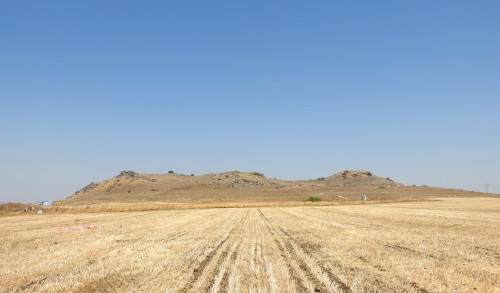
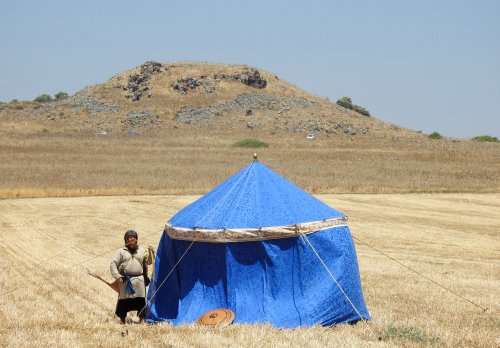
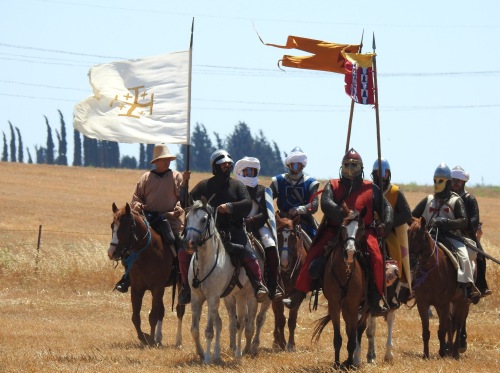
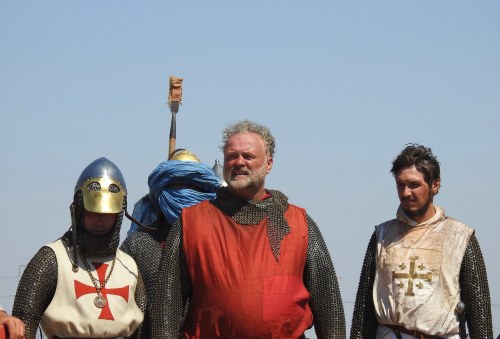
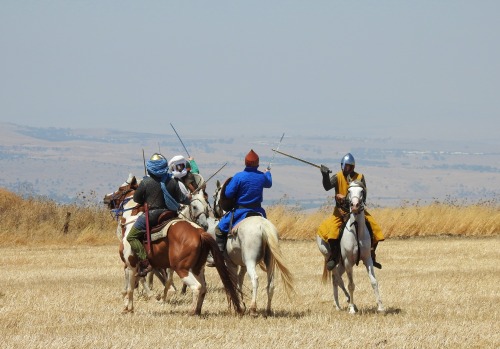
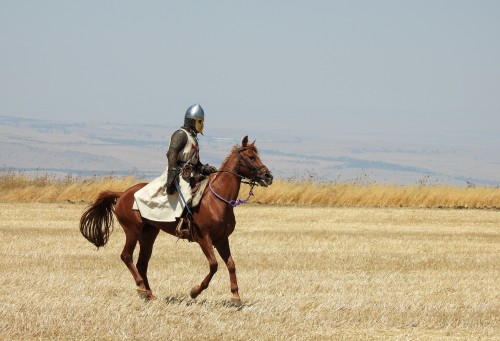
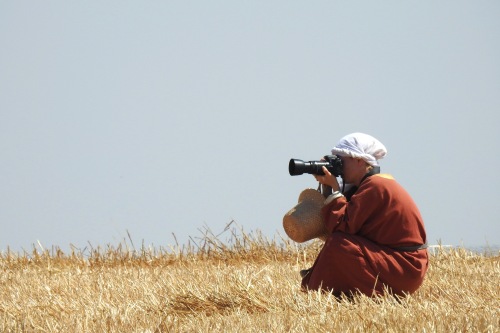
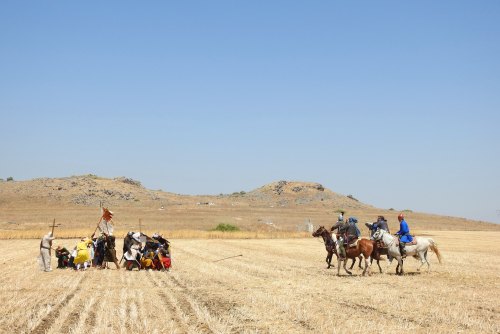
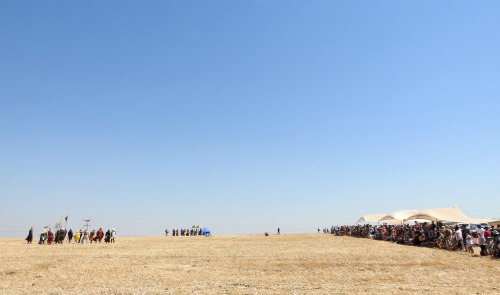
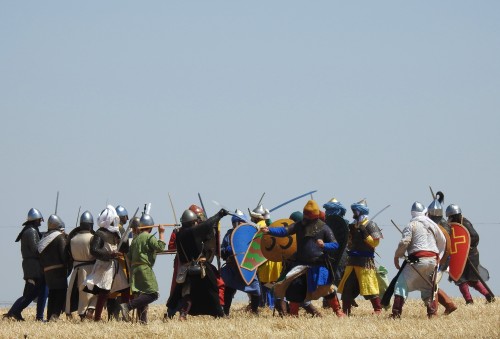
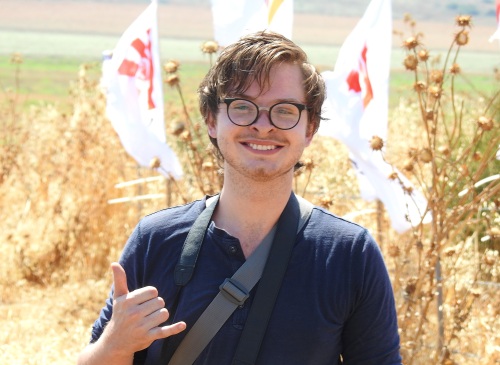
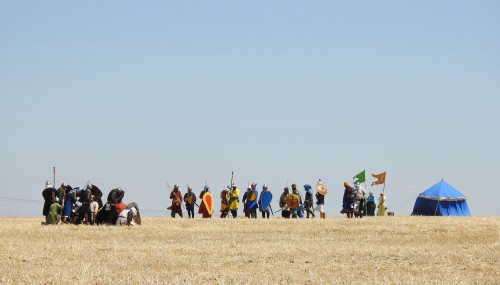
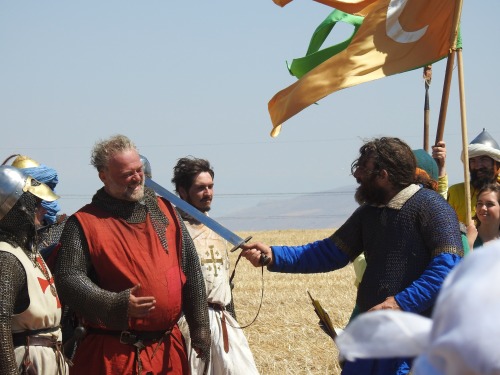
Many thanks for this!
Thank you Dave, glad you enjoyed this slightly different post!
Thanks ffor this blog post
[…] that I touched upon in a forthcoming article I co-authored last year. Along with the battle at the Horns of Hattin, which took place less than thirty kilometres to the north, the battle at Ayn Jalut is one of the […]